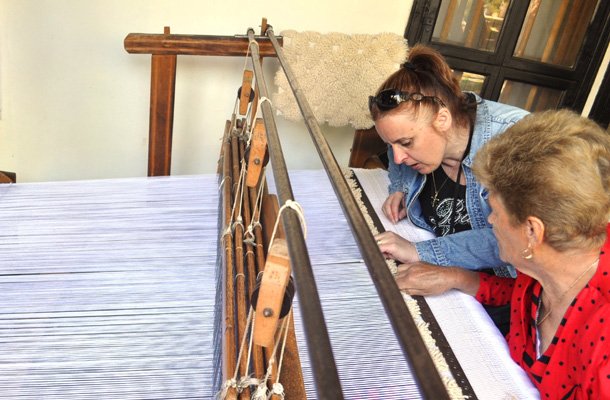
One of Bulgaria’s most picturesque Balkan Range towns Troyan has an attractive offer to its numerous visitors: a trip back in time. During the National Revival (end-18 -19 c.) Troyan was a foremost center of traditional crafts in this part of the Balkan Peninsula. Today the museum of traditional crafts in the central part of the town showcases a range of remarkable artifacts. What is more, its visitors have the opportunity to have a try with some handicrafts, though for just a brief amateur session.
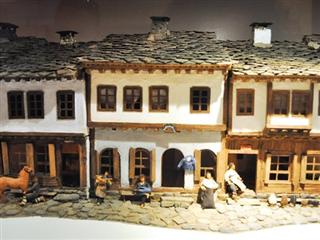
© Photo: Veneta Nikolova
More than 50 years after it opened, the Museum of Traditional Crafts and Applied Arts in Troyan welcomes visitors on its renovated premises that have been refashioned to match contemporary museum standards. Moreover, its collections have been renewed as well. The museum’s ten halls feature crafts typical of the region. Many of them are still practiced today. The mountain climate and the scarcity of arable land in the area have urged the residents of the town and nearby villages to take up crafts. During the National Revival the local craftsmen emerged as skilled potters, pyrographers coopers, dress-makers, silversmiths, coppersmiths etc. and their articles were rated highly on close and distant markets. Today pottery and woodworking are the most popular.
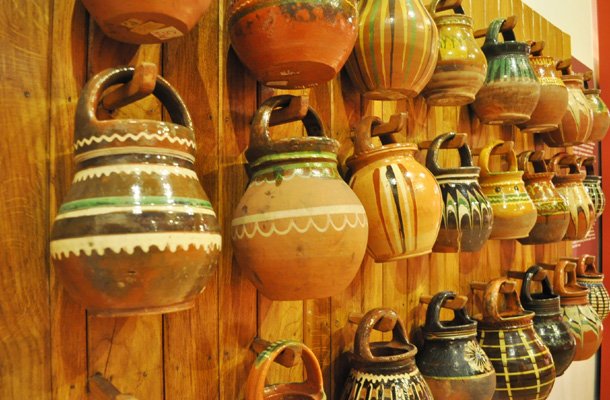
© Photo: Veneta Nikolova
Eleonora Avdjieva, director of the museum, says more:
“The Troyan masters coin their own decorative systems, however based on the classical tradition. One such technology is sgraffito. It comes from the Middle Ages however the Troyan potters have replaced the mythological symbols with floral motifs that they paint on their pots. The painted ceramics with the so-called “Zahari’s posy” are also quite common here. The Troyan craftsmen admire the art of National Revival artist of genius Zahari Zograf who left breath-taking frescos in the church of Troyan Monastery. So they have borrowed elements from his works into their decorative patterns. As to woodworking, the technique of fire-writing or pyrography is very common. It is a way to decorate wood by carving with a heated wire.”
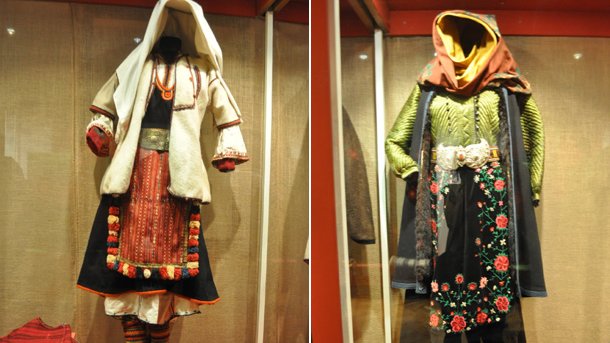
© Photo: Veneta Nikolova
The Troyan museum’s oldest items are dated to 10-11 c. BC. These are objects from a Thracian mound necropolis found in the region. A unique scale model of the Troyan crafts bazaar recreates the unmistakable workshops of the 19 c. when the town grew. Authentic pottery and woodworking shops from the same era are presented in real size. In the past, the crafts of dressmaking and weaving were very common locally. One of the museum halls is dedicated to an amazing diversity of local traditional costumes displaying lovely embroideries and woolen lacing. However, the best way to come into touch with the sophistication of Troyan crafts is to have a try in the olden technologies that have survived to date. Why not sit down behind the pottery wheel and create a nice bowl as memento from Troyan?
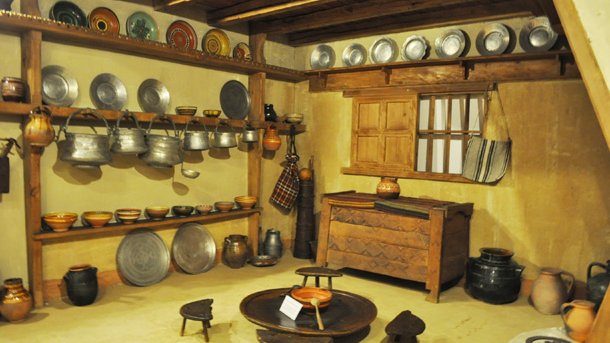
© Photo: Veneta Nikolova
“We created a special corner where we invite a potter at the pottery wheel to make demonstrations of this craft, as well as a weaver who shows how Troyan rugs are made”, Eleonora Avdjieva explains. “Besides, we act as mediators between the craftsmen and tourists who wish to get some training in local workshops. This usually takes place by means of a request made in advance. I can say there is keen interest in pottery. Tourists are happy to have a try with the pottery wheel and we provide them with this opportunity. Also, inside the museum, visitors are invited to create painted ceramics. We provide them with the pots and the guests go to a small workshop where they can paint a pot themselves copying images from the museum exhibition and then they take it away as memento.”

© Photo: Veneta Nikolova
There are a few candidates to try the loom installed in the nearby Museum-House of Ivan Hadjiiski (1907-1944), a renowned Bulgarian sociologist born in Troyan. They are welcomed by a weaver who acquaints them with the secrets of weaving. After that tourists go upstairs to learn more about Troyan lifestyles in the first half of 20 c. And, in the end, they are free to feel the atmosphere of bygone times by dressing up in a folk costume. Visitors are often photographed in an authentic setting.
English version Daniela Konstantinova
The St. Anastasia tourist island complex near Burgas, one of Bulgaria’s most visited Black Sea tourist destinations, is celebrating its 10 th anniversary. That is why the tourist season begins early this year – its official opening is on Monday,..
The free walking tours in Bulgaria's Ruse - Ruse Summer Free Tour in English - aimed at the Bulgarian and foreign guests of the city, will start on Saturday, May 4. Their route includes the most emblematic buildings and places in the central..
The history and architecture of Varna will be the main focus of free tourist tours of Varna, which started on May 1. The meeting point is in front of the Tourist Information Center. The planned tours are with professional tour..

+359 2 9336 661
